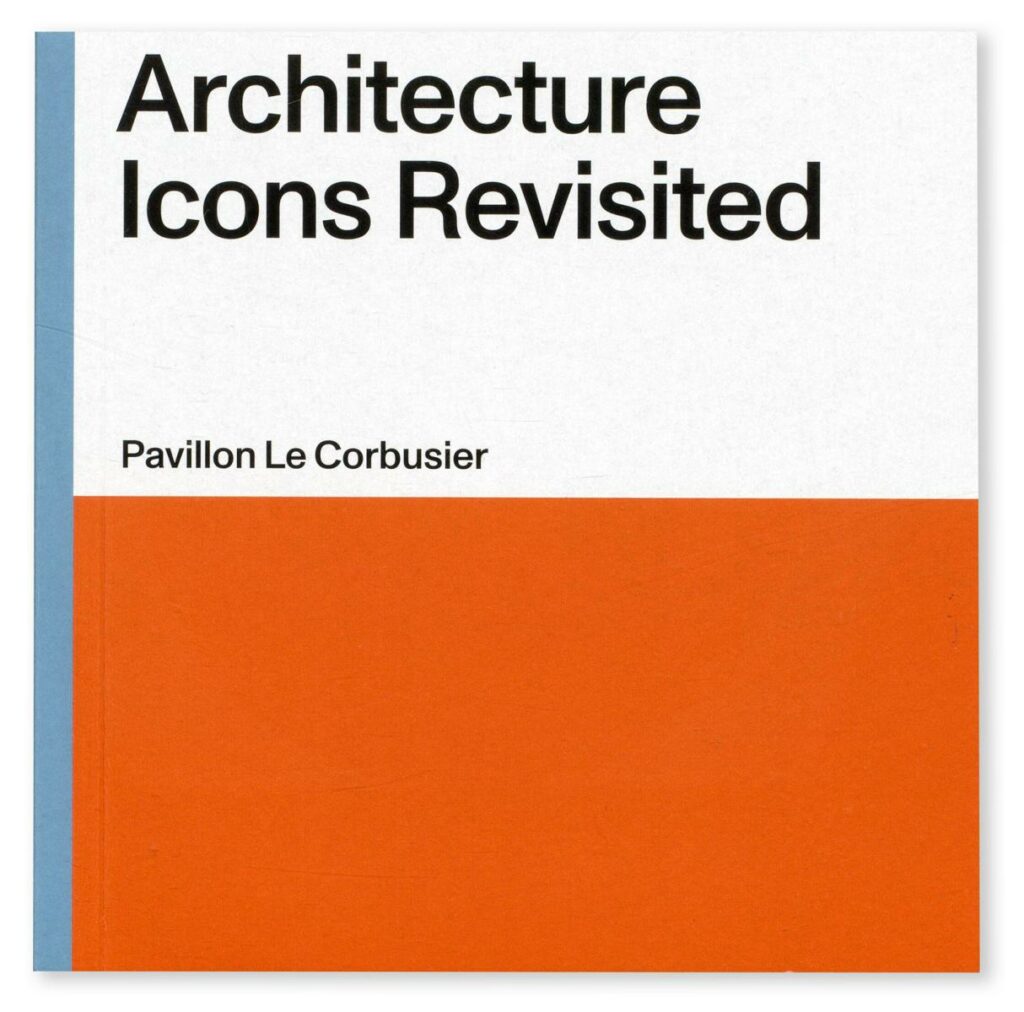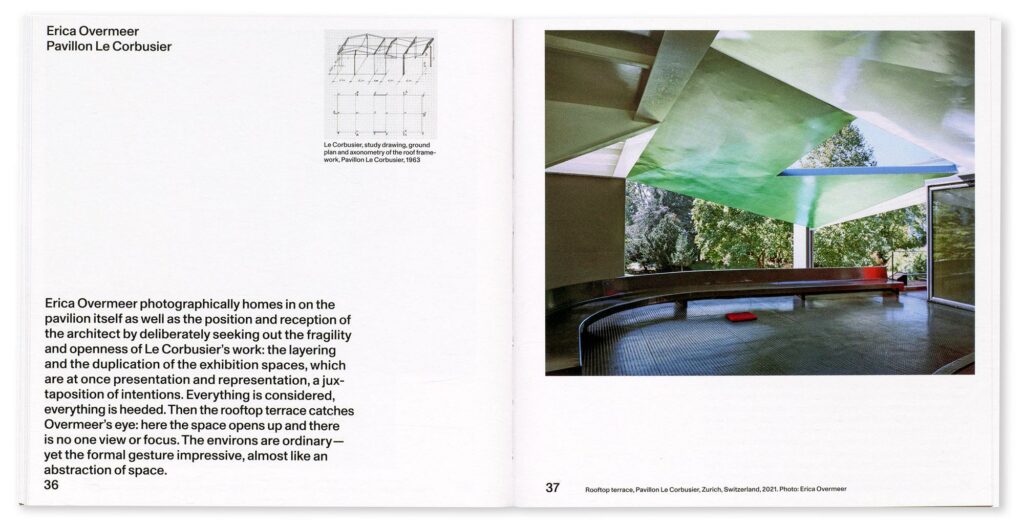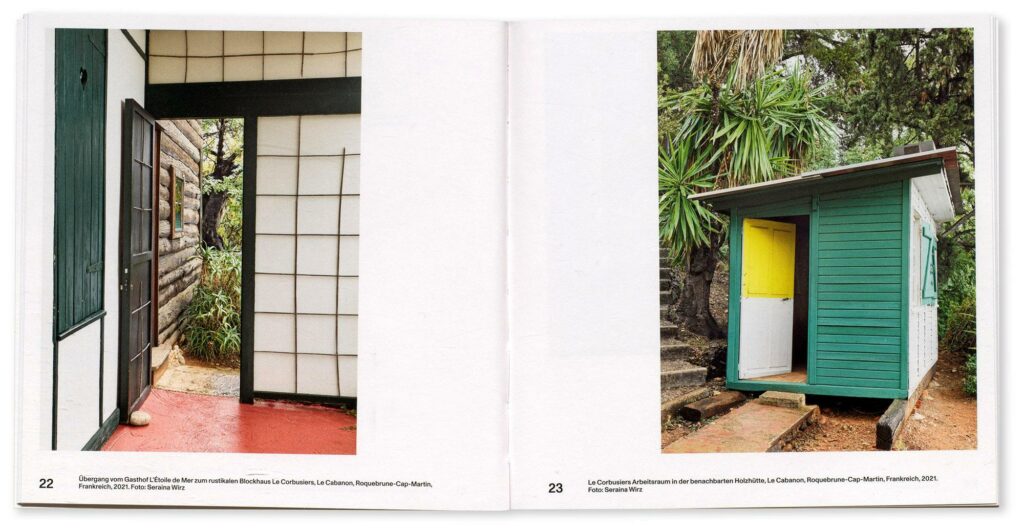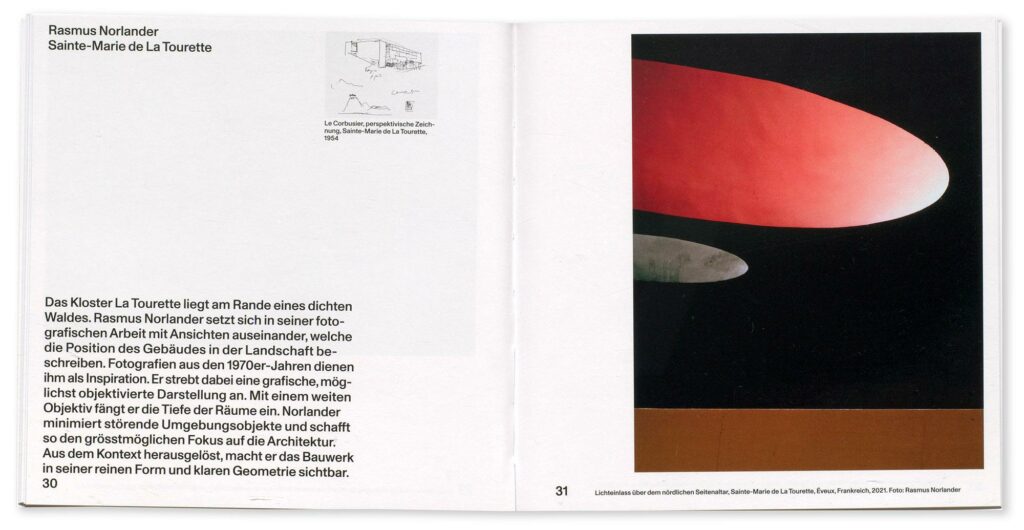
2022 | Pavillon le Corbusier – Museum für Gestaltung Zürich
Essay for the exhibition and publication Architecture Icons Revisited
Excerpts:
“While their visual languages vary profoundly, the first impression conveyed by this new corpus is the absence of a purely architectural gaze. Most of the photographers have a solid experience working within the field of architecture—sometimes exclusively—but their proposed projects do not follow the codes of traditional architecture photography, with the possible exception of Rasmus Norlander, but who himself takes a very specific approach within the genre, as shown by a closer look at his work below. Architecture photography is conventionally highly descriptive and rigorously composed, adhering to precise codes: a continuous sharpness in all planes, an image geometry reproducing the way vertical lines are constructed by our eye-brain apparatus, lens distortion kept to a minimum to mimic human vision, as well as privileging certain lighting or vantage points. Together these conventions allow the photographer to convincingly reproduce in two dimensions the visual impressions of being in a particular space. In its most standardized expression, architecture photography thus seeks a certain transparency of the medium,[1] in the sense that it attempts to make its viewer see the architecture, and the vision of the architect, rather than the image of it.[2]
In Architecture Icons Revisited, this specific view of architecture is consistently sidelined in favor or a role closer to that argued by Edward Whittaker as “determin[ing] our understanding of place.”[3] The visual corpus produced for the exhibition is not strictly documentary, and it thwarts the usual expectations of how masterpieces of architecture should be represented. The initial impression formed by these photographs is that of an intuitive approach and of the research of a specific gaze free from the normative constraints of the genre. Several authors appear focused on the Stimmung, the atmosphere, and often adopt the point of view of a wanderer: a perceptive process, grounded in the individual experience of a specific environment. They do not hesitate to produce images that retain something prosaic at times, reflecting a lived experience rather than the distance of an academic knowledge of Le Corbusier’s work.
Faced with the challenge of proposing a new vision of landmarks well established in European visual culture, some of the photographers dare to take a questioning, rather than reverential, stance—perhaps defying Le Corbusier’s view of photography as a tool for, among others, the promotion of his work and vision.[4] This approach, it could be argued, is in line with a broader contemporary critical reexamination of history, its landmarks, its monuments, as much as its prominent figures.”
[…]
“The fundamental quality of this multifaceted new corpus resides not in its ability to document architecture, or to extend a long tradition of reverence toward Le Corbusier’s seminal work, but in its capacity to bring an open and subjective edge to the reception of his oeuvre. Collectively, these photographs underline the fertile tension existing within buildings whose functions have been deeply altered as they have sedimented as icons, as ideals, as concepts. Photography can serve to reinforce a monolithic transmission of iconic architecture. However, as the photographers decline to craft a precise narrative and convey a fixed discourse, no preestablished impression or interpretation is forced on the viewer—in a stark reversal of what architecture photography conventionally stands for. The images serve as discrete entryways into the various imaginaries of this legendary oeuvre, which is here often more evoked than described. The architecture remains familiar, although presented in an unexpectedly unintimidating and unassuming way, often bringing attention to certain overlooked details or atmospheres. Through photography the authors open up new spaces where the viewer can imagine, project, and relate to the built environment, drawing from their own experiences, memories, and affections.”
[1] On the apparent transparency of architecture photography and its impact on the reception of architecture, see for instance, Peter Blundell Jones, “The Photo-dependent, the Photogenic and the Unphotographable: How our Understanding of the Modern Movement has been Conditioned by Photography,” in Camera Constructs: Photography, Architecture and the Modern City, ed. Andrew Higgott and Timothy Wray, London, 2012, pp. 172–99.
[2] On the use of photography in the study of architecture, see, for instance, Iain Borden, “Imaging Architecture: The Uses of Photography in the Practice of Architectural History,” The Journal of Architecture, 12, no. 1 (2007), pp. 57–77, p. 58.
[3] Edward Whittaker, “Photography and the Subject of Architecture,” in Camera Constructs, ed. Higgott and Wray, pp. 265-282, p. 265.
[4] Julie Noirot, “Regards croisés sur l’architecture: Le Corbusier vu par ses photographes,” Sociétés & Représentations 30, no. 2 (2010), pp. 15–26, p. 15.




Images © Museum für Gestaltung